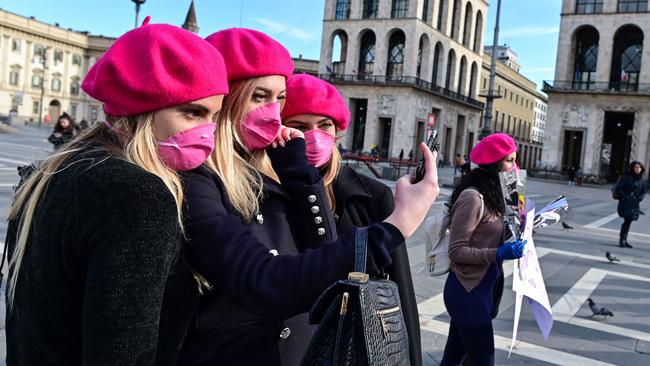Coronavirus: number of Seoul survivors gives reason to keep calm and carry on
COVID-19 is killing people in different countries at strikingly different rates — even among the developed world.

The coronavirus is killing people in different countries at strikingly different rates — even in the developed world. It’s a development the Morrison government will no doubt be keeping an eye on.
Take South Korea and Italy, the two countries with the most cases of the new coronavirus outside of China, each with more than 7300, according to figures compiled by a team of experts at Johns Hopkins University.
In South Korea, the death rate is less than 0.7 per cent. In Italy, it is almost 5 per cent. That’s quite a spread for a life-or-death issue.
I moved to Beijing three weeks before the Chinese government put more than 50 million people in Hubei into quarantine, so naturally I’ve taken a keen interest in the death rate.
It has been clear for more than a month that COVID-19’s deadliness is quite different inside and outside of Hubei.
That’s not because the strain is different in the central Chinese province where it was first identified, but because Hubei’s healthcare system — particularly in its capital, Wuhan — has been under such extreme stress.
More than 60 per cent of the world’s 110,000-odd confirmed COVID-19 cases have been in Hubei. About 4.4 per cent of those Hubei cases — almost 3000 — were fatal, meaning the province has had just under 80 per cent of all deaths from the coronavirus worldwide. Hubei’s grim COVID-19 statistics were in part a consequence of overworked doctors, cramped hospitals and, particularly in its first deadly month, shortages of medical equipment.
World Health Organisation director-general Tedros Adhanom Ghebreyesus said last week that “globally about 3.4 per cent of reported COVID-19 cases have died”.
That was technically correct. Yet without a caveat noting the Hubei distortion, the number was unhelpfully alarming — if not quite part of the “infodemic” that Tedros, a former Ethiopian health minister, says the WHO is also fighting.
Tedros’s colleague Bruce Aylward — who led the WHO’s recent two-week fact-finding mission to China — was more precise in an interview with The New York Times. “The real case fatality rate is probably what it is outside Hubei province, somewhere between 1 and 2 per cent,” said Aylward, a highly respected Canadian epidemiologist who has spent most of 2020 studying the new coronavirus.
That’s been the experience in Beijing, whose emergency coronavirus hospital in Xiaotangshan, in the city’s north, was reassuringly free of patients when I visited last week.
To date, China’s capital has had 428 cases and eight deaths. That’s a death rate of just under 1.9 per cent — a relatively comforting statistic for me when multiple cases were found in my neighbouring Beijing apartment a few weeks ago.
The rates are similar in other Chinese provinces outside of Hubei.
But the new gulf in death rates of most interest to Australians — and its federal and state governments — are those outside of China.
The difference between Italy and South Korea is currently the most striking. The Italian government has appeared to be dithering and underprepared as the coronavirus spread across the country.
That suddenly changed at the weekend, as Prime Minister Giuseppe Conte on Sunday locked down 16 million people in the country’s north. “We are facing an emergency,” he said.
Italy’s demography — with the oldest population in Europe and second oldest in the world, after Japan — exacerbates its COVID-19 challenge and in part explains its elevated death rate: currently almost 5 per cent.
Many of the deaths in the northern region of Lombardy were of people in their 80s and 90s, often with underlying health conditions.
That’s the profile the WHO has warned is most at risk from the coronavirus. And it is why — for all the inconvenience of school closures in Sydney — the real urgency for the Morrison government is better preparing Australia’s aged-care facilities, home to those most vulnerable to COVID-19.
The South Korean experience looks more comforting for Australia.
After a huge outbreak associated with the Wuhan-frequenting, hospital-avoiding Shincheonji Church of Jesus, South Korean President Moon Jae-in has led a swift and transparent response to the spread of the new coronavirus.
The proof is in South Korea’s death rate: currently below 0.7 per cent.
That is an impressive reflection on its government and healthcare system, even without taking into account the simultaneous distraction of missiles being tested by Kim Jong-un’s regime in North Korea.
And it’s reason for Australians to be calm. Although to go by the 86,174 people packed in the Melbourne Cricket Ground to watch the country’s T20 World Cup triumph on Sunday, it seems Australians don’t need too much convincing.




To join the conversation, please log in. Don't have an account? Register
Join the conversation, you are commenting as Logout